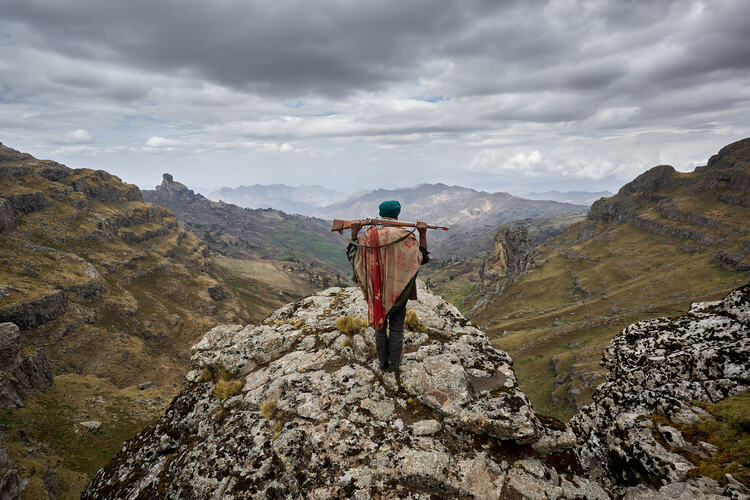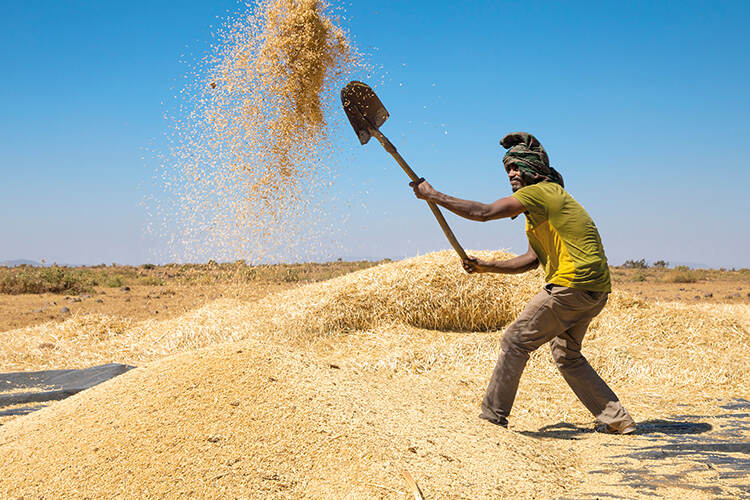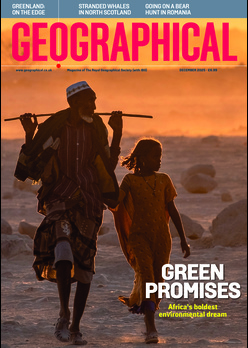
Could a ‘perfect storm’ of drought, conflict and government in-action be setting in place the foundations of a serious famine in parts of Ethiopia?
By
Aid agencies are warning that parts of Ethiopia are facing a famine that might turn out to be as serious as the devastating famines of the 1980s, which led to the deaths of around a million people. Just like then, the reasons for this current famine risk are drought, conflict, and government policy.
The area likely to be worse hit is the northern Tigray region, which has just emerged from two years of conflict (fighting continues today just a little further south in the Amhara region, which is also at high risk of famine). Getachew Reda, president of the interim authority of Tigray has said that 91 per cent of the population of the semi-arid Tigray region were ‘exposed to the risk of starvation and death’ as he called on the federal government in Addis Ababa to help.
Posting on X (formally Twitter) Reda went on to say that since the signing of a peace agreement with the federal government in November 2022 ‘thousands of Tigrayans have perished due to lack of food’ and that the Tigrayan authorities had declared a disaster emergency in the area, but that without central government help they had limited resources to cope with the crisis.
Although access to the affected areas is currently difficult for international journalists, increasing reports have been coming in of hundreds of deaths through starvation. Backing up these claims, the UN’s Office for the Coordination of Humanitarian Affairs (Ocha) estimates that more than 20 million people throughout Ethiopia are in need of food aid but that only around a third of them are actually receiving any assistance. However, the federal government continues to deny that the situation is getting critical, and they say that they are continuing to provide aid to affected areas. To make matters worse, in mid-June 2023, USAID and the UN’s World Food Programme (WFP) temporarily suspended food aid deliveries to Ethiopia, citing a ‘widespread and coordinated’ campaign by both federal soldiers and Tigrayan officials to divert donated food supplies away from the people who really needed it. Fortunately, with stricter checks now in place, the food aid programme is slowly picking up again. However, it’s still only a fraction of what is really needed.
Such is the severity of the situation that in December 2023, OCHA said: ‘The drought situation is worsening in some parts of northern, southern, and southeastern Ethiopia and is expected to deteriorate further unless food aid is urgently scaled up.’


Nearly three-quarters of the people in Tigray are farmers and agriculture comprises more than a third of the region’s economic output. The war severely damaged food production. Image: Shutterstock
While the conflict between the Tigrayan authorities and the federal government and the huge destruction and disruption this caused set the wheels in motion for the current crisis, it is the lack of rains that has pushed many Ethiopians to the brink of starvation. Every year between 2018 and 2023, the rains have largely failed across great swathes of Ethiopia, with the more arid northern and eastern regions being the worst impacted areas and parts of the normally more fertile south. Even though very heavy rains did arrive in late 2023 (bringing severe flooding to parts of East Africa), it is too late to change the reality on the ground in Ethiopia, and this is now the worst drought in forty years.
Droughts in Ethiopia are common. Some of this can be put down to the impact of La Niña weather patterns, which, unlike El Niño, tend to bring much drier weather patterns to East Africa. But, the general climate crisis has made the situation worse. Ethiopia is considered to be one of the countries most at risk from climate change. Before 1999, droughts happened roughly once every five years. Since then, the frequency of droughts has more than doubled with scientists blaming this on global warming.
Related articles




